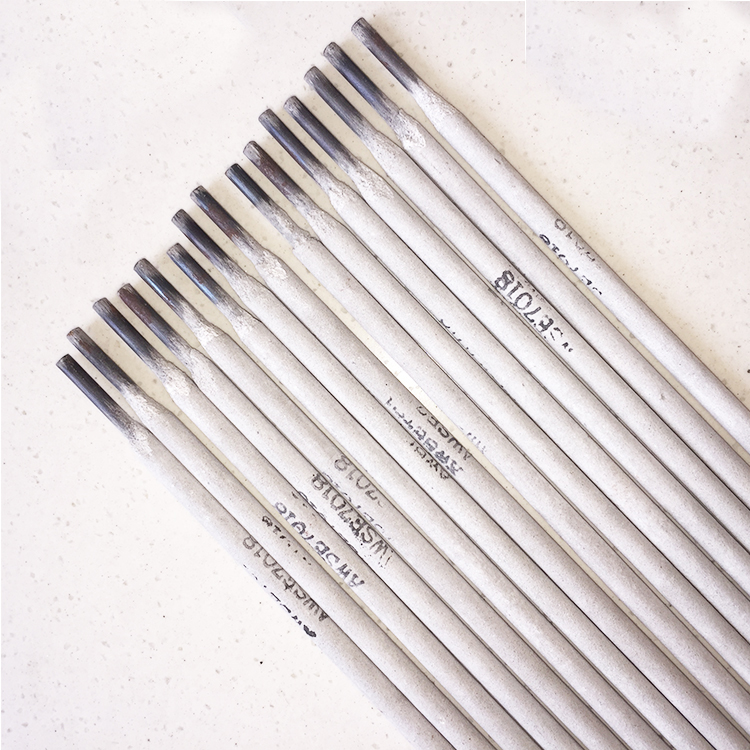Manufacturing Process and Quality Control of E6010 Welding Electrode in the Industry
The Significance of E6010 Welding Electrode in the Manufacturing Industry
In the world of welding, the choice of electrode is paramount to the quality and strength of the weld. One such electrode that has gained widespread recognition is the E6010 welding electrode. This article explores the characteristics, applications, and manufacturing processes associated with E6010 electrodes, highlighting their importance in various industries.
The E6010 welding electrode is classified under the AWS (American Welding Society) classification system, with the “E” denoting that it is an electrode for electric arc welding. The “60” indicates that the electrode can produce a minimum tensile strength of 60,000 psi, which is critical in ensuring that the welds created can withstand significant stresses. The “10” in the classification signifies that it has a fast-freeze and deep penetration capability, making it ideal for welding in various positions, including overhead and vertical.
The Significance of E6010 Welding Electrode in the Manufacturing Industry
The applications of E6010 electrodes are vast and varied. They are commonly employed in the fabrication and repair of pipelines, shipbuilding, and structural steel construction. The excellent penetration and ability to work with dirty materials make E6010 a preferred choice for numerous welding professionals. Furthermore, it is often utilized in the welding of materials such as carbon steel, which is commonly found in construction and manufacturing contexts.
e6010 welding electrode factory

Manufacturing E6010 electrodes involves a carefully controlled process to ensure quality and performance. The raw materials, including high-quality steel wire and coating materials, are meticulously selected to meet stringent industry standards. The production process begins with the drawing of the steel wire to the desired diameter, typically around 3/32 inches to 1/8 inches. This wire is then coated with the cellulose-based flux, which is crucial for the electrode's effectiveness during welding.
After coating, the electrodes undergo a drying process to eliminate any moisture, which could adversely affect welding performance. Quality control tests are then conducted to ensure that each batch of electrodes meets specified tensile strength and other performance criteria. The final product is packaged for shipment, ensuring that it remains dry and uncontaminated before reaching the end user.
The E6010 welding electrode is just one of many options available to welders, but its unique properties and capabilities make it a significant choice for various applications. Its deep penetration, fast-freezing characteristics, and ability to handle less-than-perfect surfaces make it a favorite among many welding professionals. As industries continue to evolve and demand for robust, reliable welding solutions grows, the E6010 electrode will undoubtedly maintain its place as a crucial component in the welding arsenal.
In conclusion, the E6010 welding electrode represents the intersection of quality materials, expert manufacturing, and practical applications. Its versatility and effectiveness in demanding environments underscore its ongoing relevance in the manufacturing and construction sectors. For anyone involved in welding, understanding the benefits and characteristics of the E6010 electrode can lead to better project outcomes and ultimately contribute to the success of their work. As the industry progresses, this electrode will remain an invaluable tool in achieving strong, lasting welds.
-
E316L Welding Rod: Premium 316L Stainless Steel WeldsNewsAug.11,2025
-
Premium SG2 Welding Wire | High-Quality MIG/MAG for SteelNewsAug.10,2025
-
E309 Welding Electrode: Premium Stainless Steel Stick RodsNewsAug.09,2025
-
Premium Solid MIG Wire for Strong, Reliable WeldsNewsAug.08,2025
-
E6010 Cellulose Electrode: Deep Penetration Steel Welding RodNewsAug.07,2025
-
Premium E316L Welding Rod for 316L Stainless SteelNewsAug.06,2025


